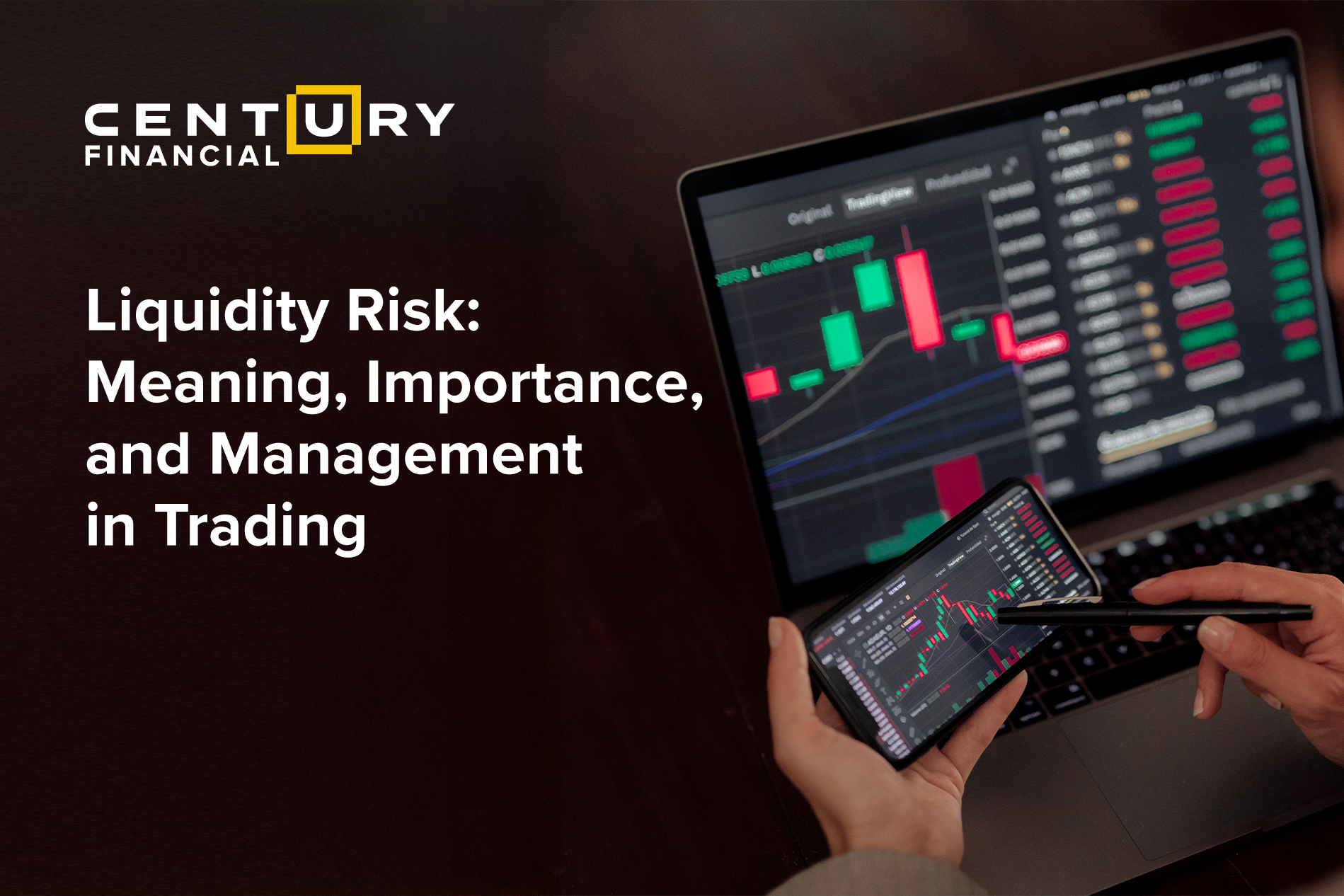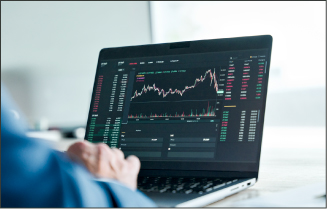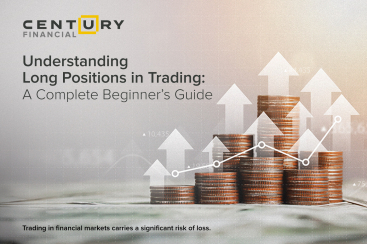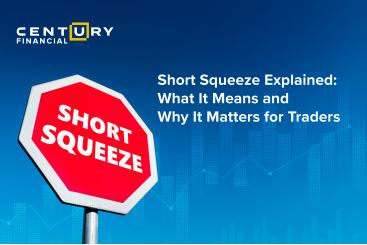Tuesday, September 30, 2025
Liquidity Risk - Meaning, Importance and Management in Trading
By Century Financial in 'Blog'

.jpg)
Introduction to Liquidity Risk
Liquidity risk is one of the most important yet often overlooked aspects of financial markets. Liquidity in finance is the ease with which an asset can be liquidated or converted into cash. Liquidity risk It refers to the possibility that an investor or institution may not be able to buy or sell an asset quickly without affecting its price significantly. In simple terms, liquidity risk arises when assets cannot be converted into cash efficiently, leading to potential financial loss.
Whether you are an individual trader or a financial institution, understanding liquidity and risk is crucial for long-term success. Liquidity plays a central role in trading decisions, portfolio diversification, and overall financial stability.
What is Liquidity Risk?
When there is not enough market activity to execute a trade at a fair price, liquidity risk occurs. It affects both financial institutions and individual investors.
There are two major types of liquidity to understand:
Market Liquidity
Market liquidity refers to how easily assets such as stocks, bonds, or derivatives can be bought or sold without causing drastic price changes. High trading liquidity is an indicator ofindicates active participation by buyers and sellers, while low liquidity means creates wider bid-ask spreads and higher trading costs. With low market liquidity, a seller might have to sell at a far lower price, and a buyer will have to pay a much higher price than intended.


Funding Liquidity
Funding liquidity relates to the ability of a business or financial institution to meet its short-term obligations. It happens whenIf a company cannot access cash or borrow funds when needed. This crunch leads to, it faces funding liquidity risk, which can lead to defaults and even or bankruptcy.

Causes of Liquidity Risk:
Several factors contribute to liquidity risk in financial markets. Understanding them will helps you traders and investors anticipate challenges.
Market Volatility

During periods of high volatility, investors tend to exit markets quickly, This reducesreducing financial liquidity and makesmaking it difficult to trade efficiently.
Economic Conditions

Recessions, inflationary pressures, and policy changes also affect liquidity. Bby These factors reduceing investor confidence and their participation in markets.
Asset-Specific Issues

Certain assets, like real estate or corporate bonds, are inherently less liquid compared to blue-chip stocks or government securities. Investors in these markets face higher liquidity risk.
Regulatory Restrictions

Government-imposed restrictions or trading halts can also reduce trading liquidity., This might freeze investors’ positions, leaving them investors unable to exit positions.
Liquidity and Risk in Trading
Liquidity and risk are closely connected in trading. While high liquidity allows traders to enter and exit positions efficiently, low liquidity increases transaction costs and risk exposure.
In liquid markets, the presence of many buyers and sellers ensures tighter bid-ask spreads., There is a balance of demand and supply; therefore, meaning traders don’t lose much value when executing trades. This also helps in reducinges slippage and enhancinges price stability.
Conversely, in illiquid markets, wider spreads (a gap between the highest price at which a buyer is willing to buy and the lowest at which a seller is willing to sell) and limited market participants can lead to sudden price fluctuations, making it difficult to execute trades at desired levels.

Impact on Retail Traders
Low liquidity can lead to slippage, where trades execute at unfavorable prices. RThis can be cited as one of the reasons why retail traders often rely on high-liquidity assets like large-cap stocks, forex, or commodities.

Impact on Institutions
Financial institutions managing large volumes need significant trading liquidity to move positions without disrupting markets. Lack of liquidity can increase systemic risk, as witnessed during the 2008 financial crisis.
Measuring Liquidity Risk
Traders and institutions use several indicators to measure and analyze liquidity risk. You can try them out too:
Bid-Ask Spread
A wide bid-ask spread signals lower trading liquidity, while a narrow spread indicates strong liquidity.
Trading Volume
Higher trading volume usually reflects greater market activity and stronger financial liquidity.
Market Depth
Market depth examines how much volume is available at different price levels. Shallow market depth increases liquidity risk.
Liquidity Ratios for Institutions
For banks and corporations, ratios like the current ratio, quick ratio, and cash ratio measure their ability to meet short-term obligations.
Liquidity Risk Management Strategies
Proper liquidity risk management can help you safeguard yourself against unexpected financial stress. Here are some tried-and-tested methods:
Diversification
Investing in multiple asset classes and sectors is always advised. It helps in reducing your exposure to liquidity risk in any single market.
Risk Assessment Models
Using advanced tools and models to simulate market stress scenarios helps institutions prepare for liquidity shocks.
Maintaining Cash Reserves
Both traders and companies reduce funding liquidity risk by keeping sufficient cash reserves.
Choosing Liquid Assets
Retail traders should go for assets with high trading liquidity, such as major forex pairs or large-cap stocks, to reduce risk.
Monitoring Market Conditions
Staying updated on global events, economic data, and market sentiment will lead to a stable and sensible bias and also help you make better decisions during liquidity fluctuations.
Why Liquidity Matters in Trading and Investment
Liquidity is not just about how easily an asset can be traded. It also determines the assets' fair valuation. Markets with high liquidity are more stable, transparent, and efficient. For long-term investors, liquidity provides confidence that they can liquidate holdings when needed, especially during market volatility.
Liquidity plays a vital role in risk management. Recognizing which assets align with your investment goals while also keeping in mind their liquidity can improve your strategy, be it long-term or short-term.
FAQs
Q1. What’s the difference between liquidity risk and market volatility?
A: Liquidity risk relates to difficulty in executing trades due to a lack of buyers/sellers, not price moves. Volatility is about price fluctuations themselves.
Q2: How do bid-ask spreads impact trading?
A: Spread reflects liquidity; wider spreads mean higher execution cost and slippage risk.
Q3: Can liquidity risk cause forced liquidation?
A: Yes. Limited liquidity can delay exits, trigger margin calls, or auto-liquidations in leveraged positions.
Q4. How does the Century Trader App help manage liquidity challenges?
A: It offers advanced orders, real-time alerts, technical indicators, and analytics to execute trades more strategically.
Q5. Is funding liquidity risk relevant for retail traders?
A: Absolutely. Even personal accounts need buffers to avoid forced exits if markets shift rapidly.
Conclusion
Liquidity risk is a silent threat. It can undermine even well-planned trades if not managed correctly. Understanding liquidity across asset classes, using sophisticated execution tools, and maintaining financial buffers help you trade confidently.
With Century Financial, you’re supported by advanced platforms (Century Trader App, MT5, CQG, TWS), robust risk-management tools, expert support, and financial safeguards. Safeguard your trading experience against liquidity pitfalls—open an account or try a demo today on Century Trader App or any of our Trading platforms and trade smarter, more securely.
The content in this blog, including any research, analysis, opinions, forecasts, or other information (collectively, "Information"), is provided by Century Financial Consultancy LLC (CFC) for marketing, educational, and general informational purposes only. It should not be construed as investment advice, a recommendation, or a solicitation to buy or sell any financial instruments.
This Information may also be published across various channels, including CFC’s website, third-party platforms, newsletters, marketing materials, emails, social media, messaging apps, webinars, and other communications. While CFC strives for accuracy, we do not guarantee the completeness, reliability, or timeliness of any content. Any decisions made based on this Information are at your own risk. CFC accepts no liability for any loss or damage arising from its use.
Trading financial products involves significant risk and may not be suitable for all investors. Please ensure you fully understand the risks and seek independent professional advice if necessary.
Please refer to the full risk disclosure mentioned on our website.









.png)
.png)
.png)
.png)


